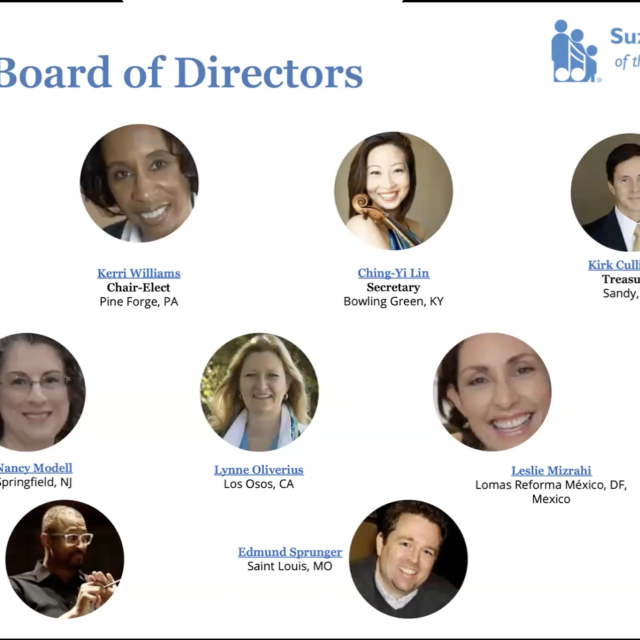As the summer in the Northern hemisphere sets in, many of us are decompressing after the end of a busy school year. Wherever we live, our lives and teaching tend to correspond to seasons. These may be the seasons of the calendar year, the academic year, or simply the rhythm of our personal and family lives. Life is in a constant state of ebb and flow, and so is our own energetic state. We all experience ups and downs—periods where our creativity abounds, as well as periods when we feel burnt out and in need of rejuvenation.
Suzuki teachers and parents are creative and energetic folks. At the same time, burnout is common among us. This may be because we devote so much time and energy to helping others. I am currently working on prioritizing rest in my routine. We all know that rest is a biological and psychological necessity. It also offers us an opportunity to renew our spirits and take stock of where we are in life. However, it can be a challenge. If I need to make changes to my schedule, whatever time I have allotted for rest is usually the first thing to be sacrificed. Perhaps others can relate!
I am reminded of how backward this thinking is in yoga, where work and rest are treated as two sides of the same coin. Every yoga class ends with a period of savasana, Sanskrit for “corpse pose.” Savasana is a restorative posture done lying on the back. It allows the body to rest and recover physically. It also allows the nervous system to take in all of the information from the class. When I engage with this posture, I feel my mind quieting down, my heartbeat and breathing slowing. Somewhere in the brain, muscle memory is taking hold. This formula of work followed by rest makes perfect sense. Every period of physical and mental exertion must have a counter period of rest. Our bodies are designed to work and learn, but not nonstop.
Perhaps burnout is also common because much of today’s world is productivity-focused. Rest is often seen as a reward for hard work, or even a guilty pleasure, rather than the essential part of life that it is. Sometimes we find ourselves in an environment where the emphasis on productivity is extreme, and we may feel valued more for what we are producing than who we actually are. It is important that we pump the brakes in situations like these, and remind ourselves that it is enough to just be. This also sets a positive example for young people—particularly teenagers—in our lives, who are learning to navigate similar issues.
All of us are built differently, so the strategies we use to renew our bodies, minds, and spirits are likewise different. I am grateful for these slower-paced summer months, where I can take a bit of a break from teaching and practicing. Summer is a season of renewal for me. I love to spend time outdoors and travel when possible to completely change up my environment. I usually return refreshed and inspired to dive back into my routine. There is something about breaking free from habits and routines for a while that makes me appreciate coming back to them. How do you renew your energy? Is it by delving into hobbies, through volunteering or faith-based community work, time with loved ones, or something else?
The theme of this edition of the American Suzuki Journal is rejuvenation. Our contributors share stories and strategies for renewal in their personal and teaching lives. Please join me in reading and learning from what they have to share.
And, speaking of renewal, this month marks the end of my term and the start of that of Chair Kerri Williams, who you will also hear from in this ASJ edition. I am looking forward to what is ahead for the SAA, and to supporting Kerri and the entire team in their work over this next “season.” Thank you to the Board, ED Angelica Cortez, and SAA staff for all that you do!








